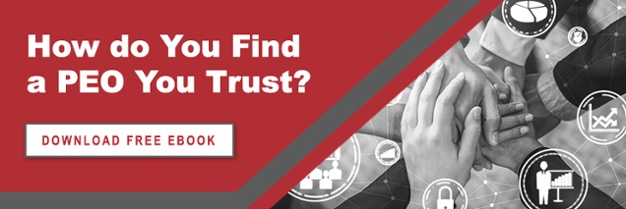
Employee performance is the driving force behind any company's success. However, even the most qualified workers may fluctuate in productivity for any number of reasons, whether it's issues at home, health, or lack of engagement at work. While some issues are personal and private, many of these can be mitigated by HR teams putting in effort to create great work environments.
A critical part of stimulating top performance is supporting your workforce. Many companies lack the time and resources to do it effectively – and as a result, satisfaction rates drop and take productivity with them.
Let's look at improving employee performance with a professional employer organization (PEO).

Factors for Improving Employee Performance
After successfully recruiting top talent, companies have to focus on improving their performance, which involves creating favorable conditions for productivity and employee satisfaction.
Establish Transparent Communication
According to The State of Business Communication Report, 72% of business owners believe that communication clarity leads to higher productivity, and 52% of knowledge workers agree. Meanwhile, 60% of the surveyed leaders believe effective communication contributes to higher employee confidence.
Communication transparency doesn't just make it easier for employees to do their jobs. It ties them closer to the company by demonstrating their contribution to its success. The more involved and engaged employees are, the more effort they invest in work. Transparency builds trust, which, in turn, fosters loyalty.
Clearly Lay Out Expectations and Job Responsibilities
In a rush to bring suitable candidates on board, many companies overlook the importance of clarity. While you may see that the new employee perfectly suits the role, they may not fully understand what you expect from them.
This lack of information could cause confusion and keep your team from working at its top capacity. To prevent this issue, you must start by outlining expectations and job responsibilities at the beginning of the recruitment process. Employees who know exactly what's expected of them have an easier time working towards meeting objectives. The last thing you want is a talented employee putting forth significant effort toward a goal that doesn't contribute to the company's ongoing success.
Provide Praise and Feedback
When employees achieve set goals, you need to recognize the effort. According to Gallup, employees who receive excellent recognition are 20 times more engaged than employees who don't. Higher engagement increases your employee performance and improves the workplace environment.
Besides recognizing excellent performance, you must provide feedback when something doesn't go as planned. The more you communicate with your employees, the easier it is for them to understand how to adjust their work to meet your objectives.
Effective feedback comes with an expiration date. Managers should provide it regularly and check in with employees at a good cadence for both of you. Younger employees prefer consistent communication with their bosses to ask questions and ensure they're doing their jobs well.
Don't Micromanage
It can be tough to find a balance between maintaining control and micromanaging. However, doing this is integral to improving employee retention, boosting performance, and avoiding burnout. According to a recent survey, almost 50% of employees say that micromanaging is one of the top reasons for quitting.
While it may seem that micromanaging can improve performance, it usually decreases morale, leads to frustration, and negatively affects your retention efforts. It's essential to trust in the employees you've chosen and give them enough space to get the job done.
Encourage Creative Ideas
Employees with sufficient support to develop creative ideas can achieve excellent results by driving innovation. Your goal is to give them enough space and tools to brainstorm, test, and implement these ideas.
Companies can encourage creative ideas by arranging additional training, rewarding creativity, and helping adopt creative thinking techniques. Welcoming ideas without pushback or comment can fuel discussion and help your company develop better processes and more efficient ways to conduct business.
Allow Flexibility to Top Performers
Flexibility is a huge benefit that employees look for nowadays, as it gives them more control over their lives and their work-life balance. It gives them the flexibility to schedule appointments or fit family time around their work. Even if your company has no policy for flextime or work flexibility (like remote work), making these concessions is a simple way to improve worker retention. And if it's your top performers are asking for these accommodations, it is definitely in the company's interest to help them within reason.
You already trust these workers, and the last thing you want is to have them looking for jobs elsewhere or risk them becoming disengaged with your company and doing less quality work.
Support a Healthy Work Culture
By creating a healthy work culture, you can nurture productivity. While all the above methods contribute to building a positive culture at work, you can streamline the process by:
- Supporting flexibility to encourage work-life balance
- Offering professional development opportunities
- Ensuring fair and equal treatment
- Nurturing a growth mindset
To improve your company culture, you don't just have to set clear goals and discuss expectations. You have to follow through every step of the way to make sure employees understand what they must do to meet the objectives. Clear communication prevents employees from making assumptions and goes a long way toward making them feel supported, even if things don't go how they want. Feeling understood by their managers and leaders is critical to retention, and the explanation demonstrates that your company is rooting for them and doing its best to get them what they want.
PEO Support Helps Companies Focus on Staff
These tactics require time and resources – which many companies and HR teams don't have. Many HR teams and leaders focus on multiple tasks that prevent them from maximizing employee potential. That's where a PEO can help.
A professional employer organization can take over administrative tasks and provide professional guidance to managers and employees. This outsourcing partner has experience developing positive company cultures through training, recognition tactics, wellness support, and more.
While the PEO team focuses on payroll processing, benefits administration, and compliance, your internal HR team gains an opportunity to handle culture, recruitment, and decision-making. Besides allowing you to focus on staff, a PEO can also provide access to higher-tier benefits, serving as additional motivation for your team.
Improving employee performance with a PEO's assistance is easier and more effective. In addition to outsourcing administrative tasks, you can share liability and leverage valuable professional advice.

